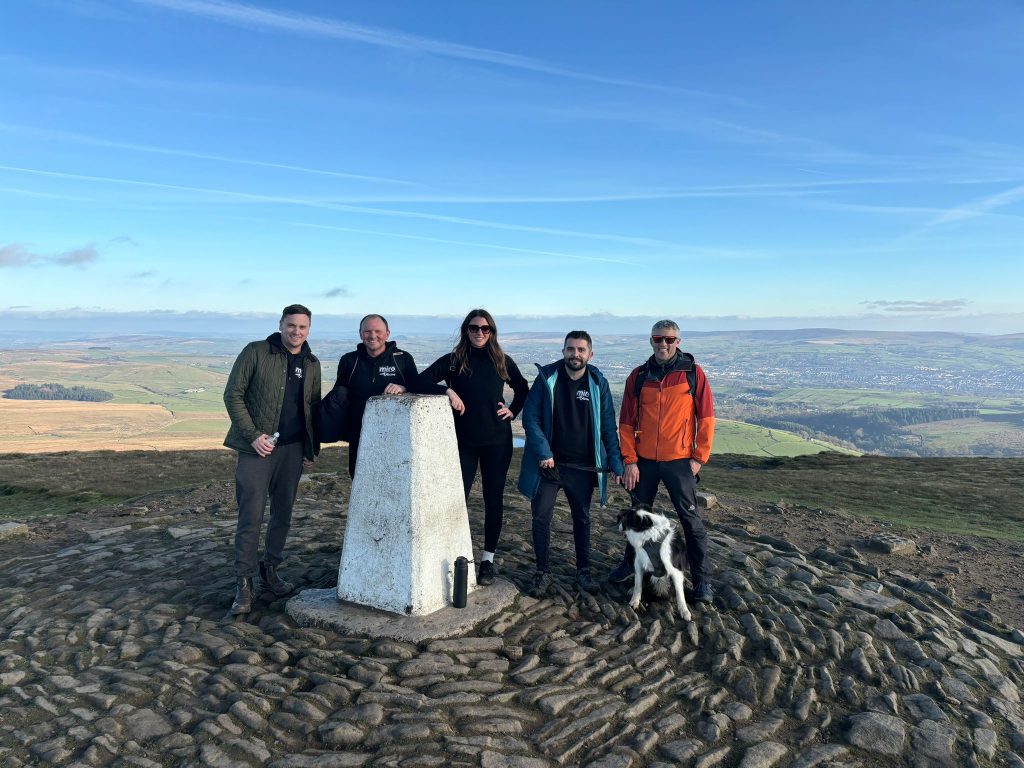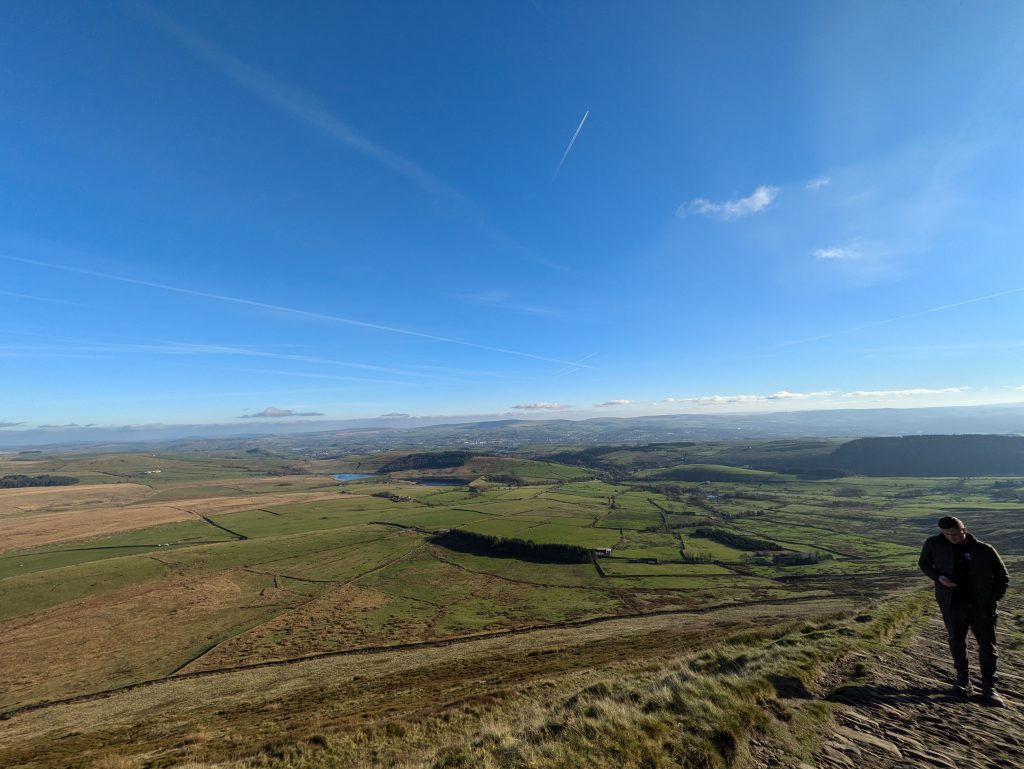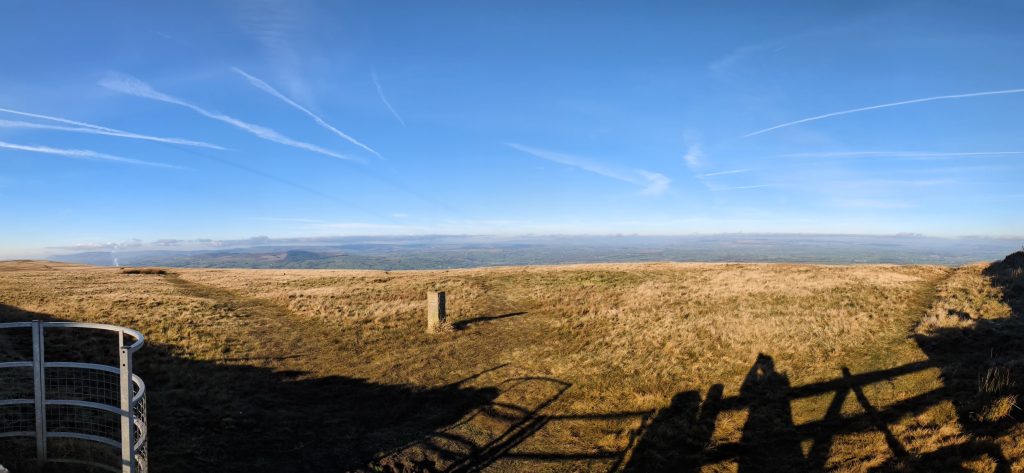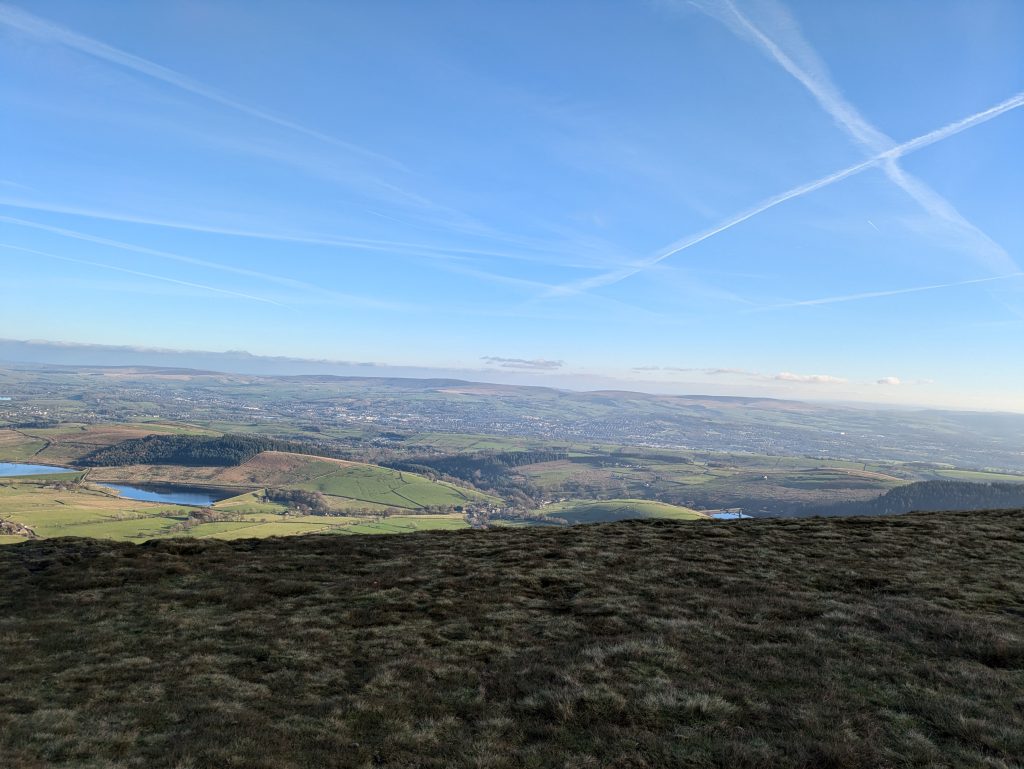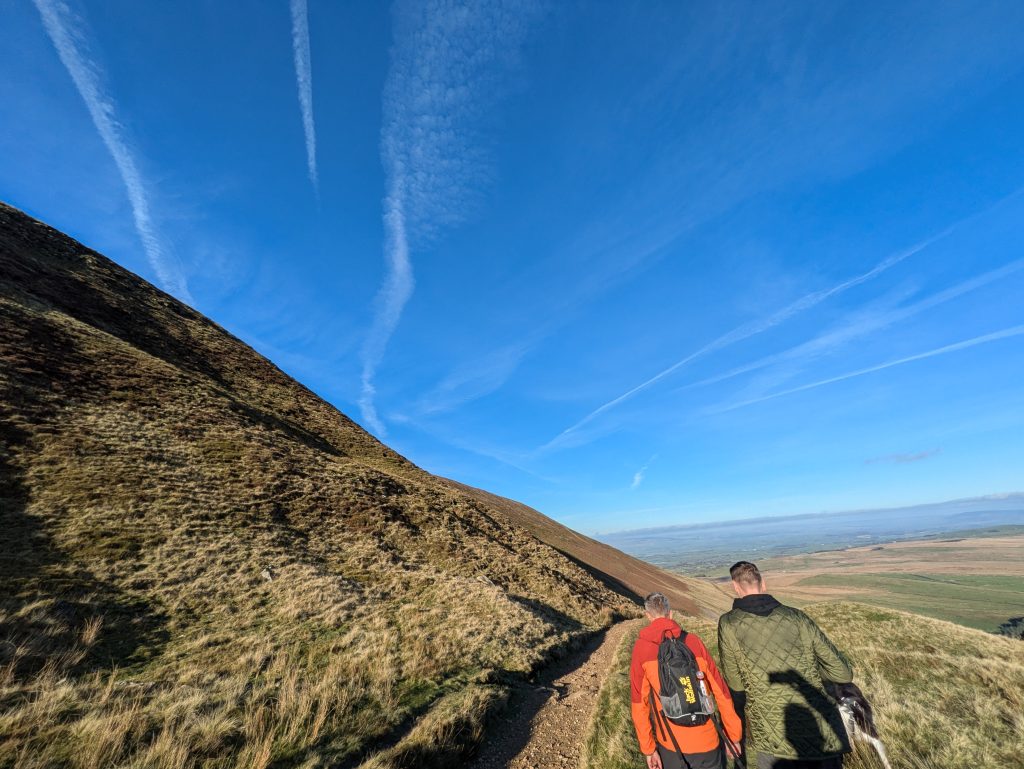Miro | Walk & Talk
We had our first ‘Walk & Talk’ get together last Thursday.
The Miro team got their walking boots on and took a trek up Pendle Hill – all in the name of mental health and wellbeing of our staff.
Following a meeting with @poweredbymates #poweredbymates, Miro were inspired to create an initiative that allows the team to get together, outside of the working environment, and talk about absolutely anything – whether it is personal or work related!
For those outside of East Lancashire and unaware of Pendle Hill and it’s rich history, here’s what you need to know about this magnificent landmark in our town:
Overview:
Pendle Hill is in the east of Lancashire, England, near the towns of Burnley, Nelson, Colne, Brierfield, Clitheroe and Padiham. Its summit is 557 metres (1,827 ft) above sea level. It gives its name to the Borough of Pendle. It is an isolated hill in the Pennines, separated from the South Pennines to the east, the Bowland Fells to the northwest, and the West Pennine Moors to the south. It is included in a detached part of the Forest of Bowland Area of Outstanding Natural Beauty.
History:
The name “Pendle Hill” combines the words for hill from three different languages (as does Bredon Hill in Worcestershire). In the 13th century it was called Pennul or Penhul, apparently from the Cumbric pen and Old English hyll, both meaning “hill”. The modern English “hill” was appended later, after the original meaning of Pendle had become opaque.
A Bronze Age burial site has been discovered at the summit of the hill.
There is an ancient local legend that the Devil once jumped from Hameldon Hill to an outcrop overlooking Sabden, on the southwest slope of Pendle, leaving footprints in the sandstone. Here he gathered rocks in an apron, and after proceeding the short distance to Apronfull, threw a boulder aimed at Clitheroe Castle. At that moment the apron string broke causing the boulder to land near Pendleton and creating the pile of rocks atop the slight prominence there.[4]
The hill is famous for its links to three events which took place in the 17th century: the Pendle witch trials (1612), Richard Towneley’s barometer experiment (1661), and the vision of George Fox (1652), which led to the foundation of the Religious Society of Friends (Quaker) movement.
Witches and the supernatural:
The story of the Pendle witches is a notorious and well-documented example of cases brought against alleged witches in 17th-century England.
The area became popular with ghost hunters after Living channel’s show Most Haunted visited it for a live investigation on Halloween 2004. The show’s presenter, Yvette Fielding, said it was the scariest episode they had made.
Pendle Hill and the surrounding area are the setting for 1951’s classic Mist Over Pendle by Robert Neill, and also for the fourth book in Joseph Delaney’s Spook’s series, called The Spook’s Battle.
“The Witchfinders”, the eighth episode of the eleventh series of the British science fiction television programme Doctor Who, takes place during the 17th-century Pendle witch trials.
It was a thoroughly enjoyable afternoon – helped by some lovely late-Autumnal weather (it was glorious for November in Burnley!) and the views from the top of the hill were stunning.
Here’s to the next get together!
View the video montage of our trip up the Hill on Tiktok, below!
#miro #miroproducts #burnley #lancashire #UK #Pendle #PendleHill #Witch #WitchCountry #walking #walk #walkandtalk #talk #talking #hiking #dog#dogsoftiktok #dogwalking #mental #healthcare #mentalhealth #mentalhealthmatters #letstalkmentalhealth #poweredbymates #SixConnections #follow #followus @miroproducts

